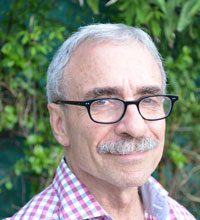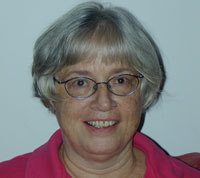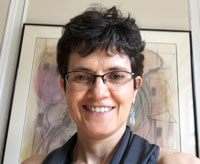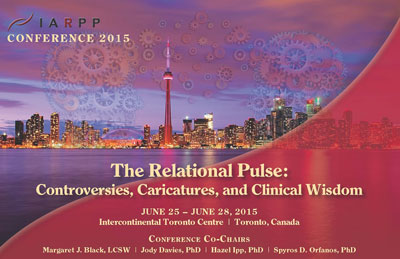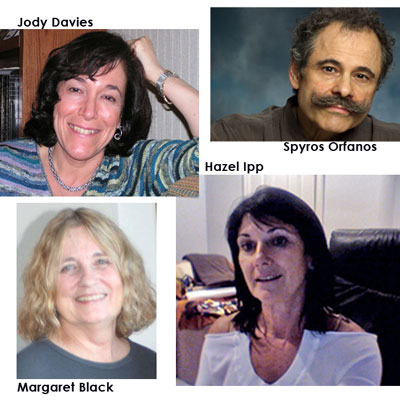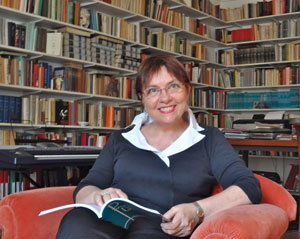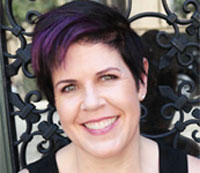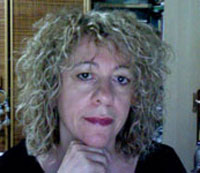By Ron Nasim (Israel)
When Irit Kleiner-Paz, my fellow presenter and dear colleague, asked if we should send a presentation proposal to the IARPP Toronto conference, I agreed without hesitation. We had been working together on one of my cases, a couple, and our meetings had sparked many rich conversations that I thought would be great to write about and share at the conference. For several years now I have been working with couples in LOTEM, a clinic in Tel Aviv for childhood sexual abuse survivors (Nasim & Nadan, 2013). This couple in particular had shown noticeable involvement and progress in their treatment, and I was interested in exploring how combining concepts from the narrative (e.g. White, 2007) and relational (e.g. Ringstrom, 2014) approaches might have facilitated this process.
Irit has been long interested in applying relational psychoanalytic ideas to couples therapy. In her PhD dissertation she identified “the couple’s stream of conversation” in the relationship, highlighting the fact that much of any relationship is created through discourse, with words gaining their meaning in the context of a couple’s stream of conversation. In our conversations Irit and I started playing with how my couple’s stream of conversation conveyed different language-games (Wittgenstein, 1953) in the context of the diverse aspects and events in the couple’s life. Through Irit’s philosophical prism, we considered the implications of an integrative approach to couples therapy, determining that relational theory offers a model of thinking that is not available within the narrative frame. As I started integrating these ideas into my own theoretical and clinical perspectives, the shift in my thinking enabled the couple and me to formulate heretofore unformulated experiences.
After going back and forth between the clinical material and the theoretical ideas, Irit and I decided that I would present the case and Irit would follow with a discussion. We called our presentation Shifting Perspectives in Long-Term Relationships: Integrating Relational and Narrative Thought in Couples Therapy. In this couple’s case I tried to demonstrate the importance of telling one’s story and of hearing it retold by the witnessing partner in what becomes a significant act of mutual recognition. For the couple I was working with, this resulted in a shift in the way each partner experienced the other in their relationship.
In Irit’s presentation she stressed that this shift in perspective in the couple could not have been achieved if I, the therapist, had not changed my own perspective as well. In this way the therapeutic process experiences changes that enable both therapist and patients to expand the multiplicity of narratives available to them, in so doing getting in touch with even more self states.
Of course we were very pleased to be accepted by the conference committee to present our papers, and then went straight into the process of editing and chopping our presentations to fit the (very early!) submission deadline and time frame. When I learned that we would be presenting together with two other presenters, I must say I was worried that this could become a very crowded and maybe even flooding panel. After reading, and very much liking, the two other presentations, I settled down. Limor Kaufman’s beautiful paper, Belonging, Not belonging, and Longing to Belong, had a strong Israeli resonance, and Stacy Malin’s moving paper, A Romantic Home, impressed me by conveying things that are essential for any therapist dealing with relational material.
With the help of our very sensitive moderator, Catherine Martin, we felt that the four presentations worked together smoothly and enriched each other. The audience resonated both from a personal and a professional stance. We could feel the same movement of ideas and feelings that I had felt when working with Irit on our paper back in Israel, right there again in the Haliburton room at the Toronto Intercontinental Hotel.
What struck me the most was the strong echo Limor’s paper brought up for all of us. She shared her analytic work with a patient with whom she closely identified. Both Limor and her patient felt like dislocated foreigners in their new homes and both longed for their original homes. I suspect that what contributed to this strong resonance was the fact that our conference was held in Toronto, a city of more than 50% immigrants. Furthermore, as Jody Davies commented in her plenary talk, being part of the relational movement places us all as “immigrants” from different schools of thought, with common questions connecting us together. Thinking about myself as a couples therapist, I always have this kind of immigrant’s feeling when I enter a particular couple’s “stream of conversations,” with its unique language, landscape, and stories. All in all, I believe our panel exemplified this “immigrant” position in various ways but also offered different ways of finding a common language and reflective space in our relationships with our patients and our colleagues.
Note: My thanks to Catherine Martin for allowing me to use her moderator’s summary notes and Irit Kleiner-Paz for proofreading.
References:
– Nasim, R., & Nadan, Y. (2013). Couples therapy with childhood sexual abuse survivors (CSA) and their partners: Establishing a context for witnessing. Family Process, 52(3), 368-377.
– Ringstrom, P. A. (2014). A Relational Psychoanalytic Approach to Couples Therapy. New York: Routledge.
– White, M. (2007). Maps of Narrative Practice. New York / London: W. W. Norton.
– Wittgenstein, L. (2009[1953]). In G. Anscombe, P. Hacker, & J. Schute, (Eds.) Philosophical Investigations, Revised Fourth Edition (2009 ed.). MA, USA and Oxford, UK: Wiley Blackwell.
 Ron Nasim, MA
Ron Nasim, MA
Clinical Psychologist & Family Therapist
5 Shtriker St.
Tel Aviv 62006
Israel
Email Ron Nasim
website: ronnasim.co.il
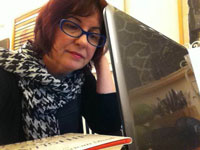 Irit Kleiner-Paz, MA
Irit Kleiner-Paz, MA
34 Elyahu Miferara St.
Tel Aviv 69865
Israel
Email Irit Kleiner-Paz
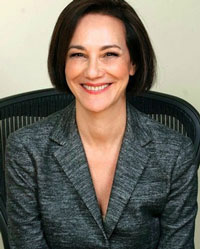 Limor Kaufman, PhD
Limor Kaufman, PhD
740 West End Ave., #44
New York NY 10025
USA
Email Limor Kaufman
 Stacy Malin, PhD
Stacy Malin, PhD
One West 64th Street, Suite 1C
New York, NY 10024
USA
email: stacy.malin@gmail.com
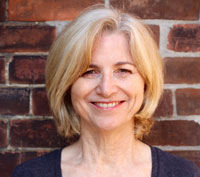 Catherine A. Martin, MSW
Catherine A. Martin, MSW
225 Riverside Drive
Toronto ON M6S4A8
Canada
Email Catherine Martin

